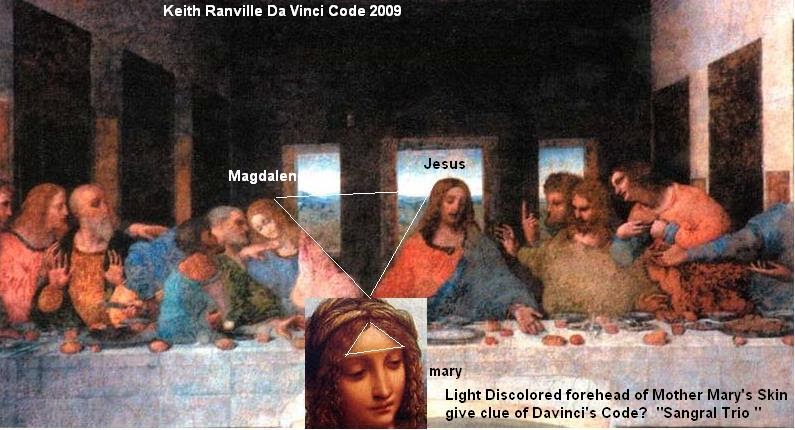Unraveling The Mysteries Of The Da Vinci Code

Table of Contents
The Priory of Sion and its Secret History
At the core of The Da Vinci Code lies the fictional Priory of Sion, a secret society portrayed as having protected the truth about Jesus Christ for centuries. This secret society, steeped in historical fiction, is alleged to have safeguarded the true lineage of Jesus and Mary Magdalene, a secret suppressed by the Catholic Church. The novel links the Priory to several influential historical figures, adding a layer of intrigue and controversy. The historical controversies surrounding the Priory of Sion itself are fascinating. While the Priory of Sion does exist historically, its actual origins and activities are far less dramatic than those depicted in the novel.
- The Priory's purported origins and evolution: In the book, the Priory's origins are traced back to the early years of Christianity, positioning it as a guardian of suppressed knowledge. Its evolution throughout history is presented as a clandestine operation, its members carefully chosen to preserve the secret.
- Key figures associated with the Priory in the novel: The novel links the Priory to figures like Sir Isaac Newton and Leonardo da Vinci, suggesting their involvement in the protection of the "truth" and contributing to the historical fiction element.
- The Priory's supposed mission to safeguard the "truth": The central narrative frames the Priory's mission as the preservation of the secret bloodline of Jesus Christ, a secret they believe was deliberately obscured by the Church.
The Holy Grail and the Sacred Feminine
The Da Vinci Code offers a radical reinterpretation of the Holy Grail, moving beyond the traditional Christian understanding of a sacred chalice. The novel positions the Grail not as a physical object but as a metaphor, representing the sacred feminine and the bloodline of Jesus and Mary Magdalene. This interpretation challenges the patriarchal structure of traditional Christianity and highlights the suppressed role of women in religious history.
- Alternative interpretations of the Holy Grail: The novel suggests that the Grail represents Mary Magdalene, the bearer of Jesus's bloodline, and her descendants, thus challenging the traditional Christian narrative.
- The significance of Mary Magdalene in the book: Mary Magdalene is portrayed not as a repentant sinner, but as a powerful figure crucial to understanding the true nature of Jesus's legacy. Her role in the narrative is essential to the core mystery presented in the book.
- The suppression of the feminine divine in traditional Christianity: The book argues that the suppression of the sacred feminine throughout history has led to an imbalance and distortion of religious understanding. This assertion contributes to the broader themes of religious power dynamics and historical revisionism explored within the book's narrative.
Deciphering Da Vinci's Codes and Clues
Leonardo da Vinci's art and life are intricately woven into the fabric of The Da Vinci Code. The novel utilizes Da Vinci's paintings and writings as a source of cryptic clues, suggesting that the artist intentionally encoded secrets within his works. This interpretation highlights the importance of iconography and hidden messages, inviting readers to engage in artistic analysis to unravel the mysteries.
- Specific examples from Da Vinci's paintings (e.g., The Last Supper): The novel meticulously examines works such as The Last Supper, interpreting the arrangement of figures and subtle details as coded messages related to the sacred feminine and the true lineage of Jesus.
- Interpretation of symbols and their significance in the narrative: The book explores various symbols found in Da Vinci's art – such as the use of specific hand gestures, facial expressions, and geometrical patterns – arguing that these symbolize the hidden truth.
- The role of art history and artistic analysis in unraveling the mysteries: The novel encourages readers to adopt a more critical and analytical approach to art history, prompting a reassessment of the symbolism and potential hidden meanings within renowned works of art.
The Controversy and Impact of The Da Vinci Code
Upon its release, The Da Vinci Code sparked intense controversy and debate, particularly within religious circles. The novel's claims regarding the historical Jesus, Mary Magdalene, and the Catholic Church's alleged suppression of truth led to significant criticism and accusations of historical inaccuracies. However, the book's impact extends beyond religious discourse, influencing popular culture, tourism, and the public's understanding of history.
- Criticism and controversies surrounding the book's historical accuracy: Historians and theologians widely criticized the novel for its liberties with historical facts and its speculative interpretations of religious texts.
- The book's impact on tourism and interest in historical sites: The popularity of The Da Vinci Code significantly increased tourism to locations featured in the novel, such as the Louvre Museum and Rosslyn Chapel, illustrating the powerful influence of fiction on historical awareness.
- The lasting legacy of The Da Vinci Code in popular culture: The novel's enduring popularity has cemented its place in popular culture, influencing subsequent novels, films, and documentaries, and sparking ongoing discussion about religious history and symbolism. This demonstrates its lasting legacy and cultural impact.
Unlocking the Enduring Appeal of The Da Vinci Code
The Da Vinci Code continues to captivate readers with its blend of historical fiction, religious mystery, and artistic intrigue. The novel's exploration of the Priory of Sion, the reinterpreted Holy Grail, and the hidden messages within Leonardo da Vinci's art ignites curiosity and sparks debate about religious history and symbolism. Its controversial interpretations challenge traditional narratives, encouraging readers to question established beliefs and engage in critical thinking. Continue unraveling the mysteries of The Da Vinci Code by exploring related documentaries, delving into the history and art referenced in the book, and further researching the historical controversies surrounding the Priory of Sion and the interpretations of the Holy Grail. The enduring appeal of The Da Vinci Code lies in its ability to challenge preconceived notions and inspire further exploration of fascinating historical and religious enigmas.

Featured Posts
-
 Ostapenko Stuns Swiatek Again Advances To Stuttgart Semifinals
May 13, 2025
Ostapenko Stuns Swiatek Again Advances To Stuttgart Semifinals
May 13, 2025 -
 Sabadell In Talks With Unicaja Investors Potential Merger On The Horizon
May 13, 2025
Sabadell In Talks With Unicaja Investors Potential Merger On The Horizon
May 13, 2025 -
 Leonardo Di Caprio Nevjerojatna Transformacija Slobodna Dalmacija
May 13, 2025
Leonardo Di Caprio Nevjerojatna Transformacija Slobodna Dalmacija
May 13, 2025 -
 Gibraltar Industries Nasdaq Rock Stock Earnings Preview And Investment Outlook
May 13, 2025
Gibraltar Industries Nasdaq Rock Stock Earnings Preview And Investment Outlook
May 13, 2025 -
 Guilty Plea In Covid 19 Test Result Falsification Case
May 13, 2025
Guilty Plea In Covid 19 Test Result Falsification Case
May 13, 2025
